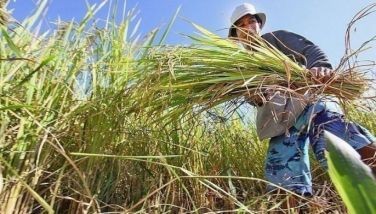What is open pit mining?
MANILA, Philippines - The director of Mines and Geosciences Bureau (MGB) Region XII is set to clarify with the South Cotabato provincial government what constitutes open-pit mining. This after the Sangguniang Panlalawigan of this province approved into law last June a controversial Environment Code prohibiting its use.
Constancio Paye Jr., director of MGB 12, said he would meet with provincial officials to discuss the code’s definition of open pit mining. “Marami kasing definition ng ‘open-pit mining’. Even our mining law [RA 7942], may sariling definition. You also have to look at the mining [text]books, they also have their own definitions,” Paye said.
Open-pit mining, is defined as the “method of extracting rock or minerals from the earth by their removal from an open pit or borrow.” Also referred to as open-cast mining and open-cut mining, open pit mining is used “when deposits of commercially useful minerals or rock are found near the surface; that is where the overburden (surface material covering the valuable deposit) is relatively thin or the material of interest is structurally unsuitable for tunneling.”
According to Paye, the Environment Code defines open-pit mining along this line. “May isang sentence doon that says ‘As long as it is not underground, it is considered as open-pit mining’,” he declared.
Paye, who is also the chairman of Provincial Mine Regulatory Board, agreed with this definition. “Sa akin naman, if you do mining from the surface, if you have to mine openly, that’s an open pit. As long as that’s not underground, that’s an open pit,” he said.
Herein lies the conundrum. By definition, quarries are defined as “open-pit mines that produce building materials and dimension stone.” Paye concurs with this definition. “If you ask me, that [quarrying] is open-pit mining,” he stated.
If it is to be strictly implemented, then the ban would have to encompass quarrying since it is a form of open-pit mining according to the definition set by the Environment Code.
Last June, the provincial government of South Cotabato passed into law an environment code banning open-pit mining in the province. The move was perceived as a serious hindrance to the Tampakan Copper-Gold Project, considered as the single biggest direct investment in the history of the Philippines. Sagittarius Mines, Inc. (SMI) holds a Financial and Technical Assistance Agreement (FTAA) with the National Government to develop and operate the said project.
Asked if the provincial ban will include quarrying, the MGB regional director said he will first seek clarification with the provincial government. “That question has to be clarified with the concerned local officials. Does it include quarrying or limestone mining? How about smale-scale mining? Or is it [the ban] just specific to some mining groups?” Paye asked.
Aside from its potential to become one of the biggest mines in the world, the Tampakan Project is also expected to provide employment to an estimated 9,000 workers in its construction phase and over 2,000 during its operation. Taxes and royalties that are to be paid to local government units, host barangays and tribal communities were estimated to be at least P65 billion, while the National Government stand to receive a total of P225 billion in taxes during the life of the mine.
- Latest

























